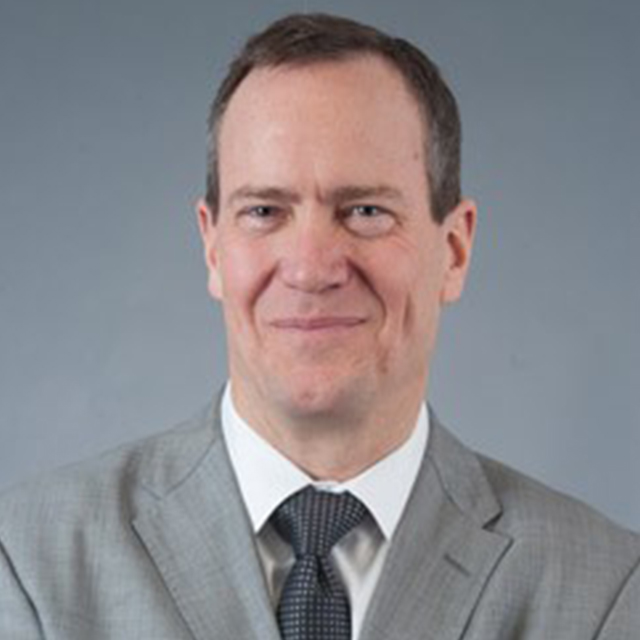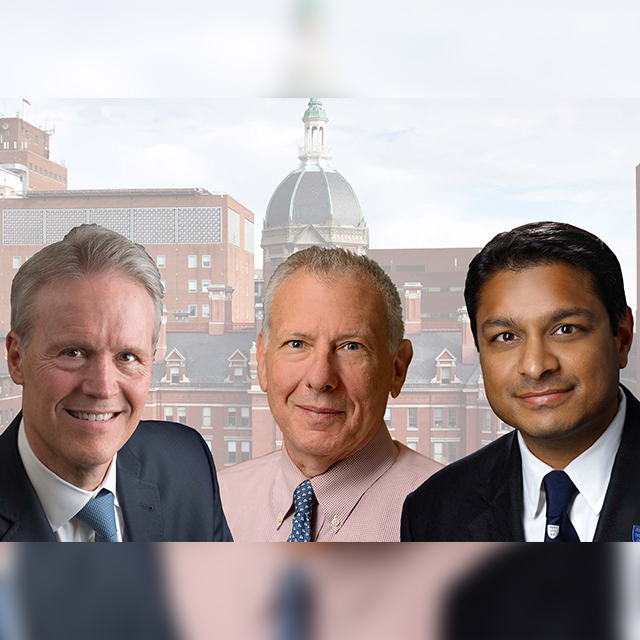Like many of his colleagues, Hy Levitsky (Janeway, 1987), cared for a substantial number of patients diagnosed with cancer during his Osler residency. “Back then,” he recalls, “progress in developing new treatments for cancer was really slow and formulaic.” Levitsky, who earned his medical degree at Johns Hopkins, completed a fellowship in oncology at the institution, in hopes of helping to advance cancer research and treatments.
Now, as president of research and development at Century Therapeutics in Seattle, a position he’s held since 2019, Levitsky leads groundbreaking cancer research, using induced pluripotent stem cells to generate cell therapies for the treatment of cancer. He previously served as executive vice president of research and chief scientific officer at Juno Therapeutics in Seattle and, before that, as head of cancer immunotherapy and experimental medicine at Roche Pharma Research and Early Development in Switzerland. Before joining industry, as a faculty member at Johns Hopkins, Levitsky focused his research on how the immune system interacts with cancer — specifically on antigen processing and presentation, T cell activation and regulation, and on how T cells can be used as cancer therapies. He’s been an adjunct professor at Johns Hopkins since 2015. (See bio at right on desktop and below article on mobile devices.)
What made you decide to pursue a career in oncology?
I was first inspired by the bonds forged with patients when I was an Osler resident. Conversations ran very deep — at times, they were profound. Those relationships were rewarding, personally and professionally. On the one hand, I took solace in sharing information with patients about new treatments that provided hope. But I was frustrated that the science was moving too slowly, and patients’ needs were not being met in a timeframe that could help them.
When did you know you could play a role in advancing the science of cancer immunotherapies?
Bone marrow transplantation (BMT) was one area in which we saw firsthand how bench-to-bedside research could save lives. The kinds of therapies being developed in the BMT unit were driven by excellence among scientists and clinicians — led at Johns Hopkins by George Santos — and they inspired me. George started this work when I was still in high school. I came into the program during what was considered the early days. When I joined the oncology faculty, I participated in basic research to make these treatments more effective. I soon came to appreciate the incredible power of the immune system. The rest of my career has focused on advancing and harnessing that knowledge to develop cures. It’s been an incredibly rewarding experience.
Who were your role models at Johns Hopkins?
One of my first role models was Steve Schulman. He led my firm — Janeway — as assistant chief of service. Steve took such joy in taking care of patients. And, he was tireless, unflappable and supportive of house staff and young doctors. The skills he brought to the bedside every day left a lifelong impression on me, as did his being a caring mentor.
On the science side, George Santos, the father of bone marrow transplantation, inspired me tremendously. He paved the way for the career path I took, and he motivated me to advance discoveries to have an impact on patient care as quickly as possible.
What were your greatest challenges?
Early in my career, mainstream oncology didn’t buy into immunotherapy. The focus was entirely on the cancer cell, largely ignoring interactions with nonmalignant cells that respond to cancer. The good news is that many of us were swayed by evidence that the immune system was intimately involved in the biology of cancer and could be manipulated for therapeutic benefit, and we persisted. The turning point came when immune checkpoints that regulate the immune system were discovered. Learning how to disarm these checkpoints proved to be highly impactful. We’ve made strides in lung cancer, kidney cancer and a growing list of cancers through manipulation in the immune system, not just the cancer cells themselves. Then those studies exploded, leading to the approval of a whole class of drugs that impact many different cancer types.
How were you able to harness and advance the science?
Because I’d been involved in BMT, I became interested in augmenting the ability of transferred cells to attack cancer. Advances in gene transfer technology made it possible to genetically modify a patient’s own T cells to attack their cancer. I was really interested in how to make cells capable of effectively targeting cancer, something conventional drugs can’t replicate.
These advances had extraordinary potential, but bringing them to patients required enormous investments — beyond what could be supported in most academic settings. Yet, in that milieu, we not only had the freedom to pursue important questions, but also to forge partnerships with people outside academia. Some of the early discoveries from my research led to patents that were licensed to biotech companies that partnered in bringing these approaches to the clinic. Johns Hopkins was highly supportive of these partnerships, recognizing the synergies they afforded.
When did you know this path had changed the status quo for targeted cancer therapies?
By 2011, some of the advances in immunotherapy were becoming more broadly recognized, and pharmaceutical companies finally started to pursue this path in earnest. I served as an advisory board member for a few. Having worked in this discipline my entire career, I recognized the need to bring this experience to the next chapter in drug development. So, in 2011, after serving 20 years on the oncology faculty at Johns Hopkins, I transitioned from academia to industry.
Leading large teams of scientists and clinicians in industry required learning a whole new set of operating principles. Drug development is a field unto itself, so once again, I was on the steep end of the learning curve. As I look back, it’s interesting to see how the mission has been the same during both phases of my career, but the methodology and strategies for achieving these ends are quite different. It has been extremely rewarding to have experienced them both.
Support the Osler Fund for Scholarship
By investing in the future of our young doctors, we continue the legacy of William Osler to prepare and inspire the next generation of leaders. Your contribution supports educational opportunities for current residents to enhance their training — experiences that might not otherwise be possible. If you are interested in supporting our housestaff, contact Ashley Norris at 254-723-6700 or [email protected]. Thank you for your continued support. To make a gift online, please visit our website at bit.ly/oslerfundforscholarship.


